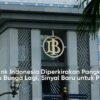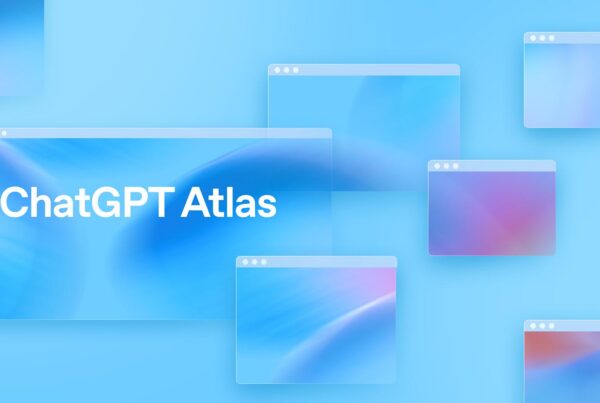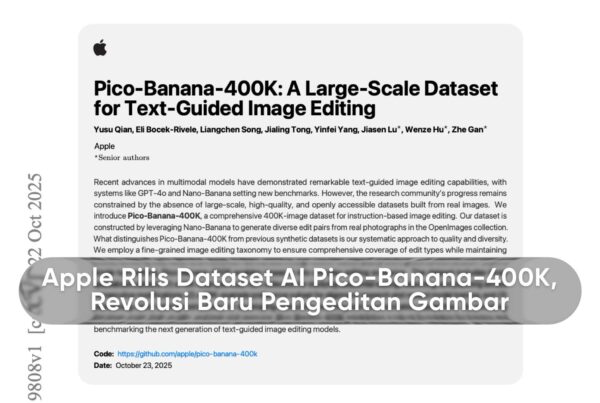Google has become one of the successful examples of a large company that has its own Top-Level Domain (TLD), namely.googleBut behind the luxury of that exclusive web address lies an enormous investment.TLD costIt's not just about buying a domain, but rather encompasses the responsibility as an official registry operator under ICANN's supervision (Internet Corporation for Assigned Names and Numbers).
Although the idea of having its own branded TLD sounds prestigious, only a few global companies like Google, BMW, or Canon are able to do so. The reason is simple: the cost is very high and the process is complex.
Why do only a handful of brands have their own TLD?
The process to have a TLD such as.googleIt's not as easy as registering a regular domain. The company must register with ICANN, the global body that governs the Domain Name System worldwide. After submission, the company is evaluated based on the technical, financial, and data security aspects before being approved.
In addition, ownership of the TLD requires that the entity become the operatorregistry—not just a domain user. In other words, they must provide the same infrastructure, DNS security, and legal compliance as public domains such as .com or .organization
ICANN's strict requirements
ICANN chargesThe application fee amounts to USD 227,000., not including additional costs for conditional evaluation if there are revisions or repairs. Once accepted, the company is still required to pay annual operating costs that include system maintenance, audits, and reporting.
In other words, only large companies with substantial funds and strong infrastructure can bear the financial and administrative burden.
Main Cost Components of TLD Creation
to buildTLD branddoes not stop at the submission process. There are several major cost components that must be met for the domain to operate officially.
Application fee to ICANN
The first step is the payment of the ICANN evaluation fee in the amount ofUSD 227,000This figure only covers the document review process and does not include other technical needs such as legal consultations or the drafting of technical proposals.
After submission, ICANN will assess the company's readiness in terms of the DNS system, server redundancy, and the security of user data. If assessed as not meeting the standard, additional charges may be imposed for the repair process or for further evaluation.
Operating and maintenance costs
After approval, the TLD owner is obliged to bearannual operating costs. This component includes:
- Fixed registry costs and technical maintenance
- Periodic payments to ICANN
- Per-transaction fee for domain name
- Vendor backend registry and escrow data
- Security infrastructure, DNS, and the technical team.
Some reports estimate that the total operating costs for the first two years could exceed.USD 2 million or more, depends on the complexity and scale of operations.
Marketing and Branding Costs
The next challenge is market education. Internet users are already accustomed to domains such as.com, .net, or .ID Thus, to introduce a new TLD such as.brandneeds a massive marketing campaign so that the public will know it.
Google, for example, integrates.googlein various internal services, such as a blog, a developer platform, and corporate communications. However, outside of a company as large as Google, branding challenges can be far heavier and more expensive.
Litigation and Regulatory Compliance Costs
ICANN implements a mechanism.dispute resolutionIf there is another party who feels entitled to a similar TLD. This arbitration or litigation process is costly, not including the annual legal obligations to ensure the registry remains in compliance with global policy.
Total Cost Simulation for TLD Creation
If converted into a realistic estimate, here are the cost projections the company needs to prepare: Components Estimated Cost (USD) ICANN application fee 227,000 Consulting and legal 100,000 – 300,000 Initial technical infrastructure 500,000 – 1,000,000 Marketing and branding 200,000 – 400,000 Annual operating costs 75,000 – 100,000
In the first two years, total costs can reachUSD 1.5–2 million, or aroundRp25–32 billionat the current exchange rate.
Why Google is successful, and many brands are not.
success.googleto become a standalone case study in the digital industry. Google is able to leverage its TLD to build an internal ecosystem that is secure, controlled, and aligned with the corporate identity.
Strategic Advantage.google
With its own TLD, Google has full control over DNS, security, and internal domain authority. This enables them to create systems that are more closed off from external cyber attacks.
In addition, TLDs such as .Google strengthens public trust. Every site ending with.Google is directly associated with the authenticity and authority of the company, reducing the risk of phishing or duplication.
Barriers for Other Companies
On the other hand, medium-sized or small companies will have difficulty bearing costs and administrative burdens of that magnitude. In addition to funds, they also have to assemble a specialized technical team, a legal compliance officer, and high-security systems.
Therefore, most businesses choose more realistic alternatives such aspremium domain(.com, .id, .tech) orbrand subdomain, which costs far less.
The future of TLDs and trends.Brand
Although expensive, the usage trend.brandTLD continues to grow among global corporations. ICANN data show that more than 500 companies now have their own custom TLDs, from.apple until.Microsoft.
Business Opportunities in the Digital Era
A brand's TLD can be a strategic branding tool. With a custom domain, companies can build a more credible and personal digital experience. For example, an automotive company can use domains such as showroom.brand or finance.brand for customer service.
However, this large investment is only worthwhile if it is commensurate with the company's scale and global value. For local businesses, conventional domain strategy remains the most efficient option.
Ecosystem Support and Regulation
In the future, ICANN is predicted to reopen the registration of new gTLDs in 2026. However, experts estimate that its cost will not fall drastically, given the complexity and the legal responsibilities that accompany it.
Having a brand TLD such as.googleIndeed provides extraordinary prestige and digital control. However, behind it lie significant costs and responsibilities that not all companies are prepared to bear.
With an estimated total reaching millions of dollars in the first two years, private TLD ownership is more suitable for global corporations with robust infrastructure. Meanwhile, for small and medium-sized businesses, conventional domains remain the most rational way to build a digital presence.
To read news related to digital technology trends and other internet investments, visitInsemination.
Discover more from Insimen
Subscribe to get the latest posts sent to your email.










